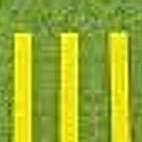soil in bags
-
Recently Browsing 0 members
- No registered users viewing this page.
-
Topics
-
-
Popular Contributors
-
-
Latest posts...
-
20
Chikungunya - They are at it again!
I'm pretty convinced they know what they are spouting is utter garbage.....but they have also realised there is a lot of money to me made from it. -
7
While Trump fails, Carney outsmarts him once again
you have been trolling a lot and sometimes called out for it,truly maga in its core existence . Not smart enough to come up with any original thought,keep drinking the cool aid ! -
30
UK 474 Arrested at London Protest Against Palestine Action Ban
You don't get it Vangrop Sir, do you. We are in an immensely privileged position. We (humans) are top doggies on this wonderful, bountiful planet. Yet we abuse the earth itself, fellow humans and creatures. This beautiful and bountiful place we call home. has everything we need. Everything! Everything - be it a car or a ship or a plate of food - must be made from the earth. With out the earth - without nature - we are nothing. It is our responsibility to make sure that the earth is fit for purpose when we leave it. And those that follow, should be of the same mindset. Starving people, and murdering is not in nature's encyclopedia. We must unite and force the changes that will ensure our destiny. At the present time empires are the cause of not only great human suffering, but are hurting the very world that we all depend on. And even more importantly; what the future generations will depend upon. We must get off our knees and report to nature for our orders. -
5
City beach resort hotel - good for families?
I stayed there for 3 nights last week. Great location, 5 minutes walk from the beach, 2 minutes to nightlife, two 7/11s and a nice Irish pub less than 30 minutes walk away. The hotel itself is very dated, kind eerie, but it's still a half decent hotel. I paid 1200baht per night on Agoda, 2,500 is wayyyyy too much! Anyway, check out my full video review here: City Beach Resort - Hua Hin - Review -
17
I just don't get itI have an hearing aid
Yes. I think to secure the full function of the AirPods you need an iPhone......and probably quite a recent one 13 upwards? But they were a God send....... for me at least. I trialled a "cheap" set of hearing aids.......£1,350........so happy to find I could use the AirPods instead. The only draw back for me is I need BiCROS hearing aids......but I'm hoping Apple will eventually twig and introduce software to achieve that. -
11
Bangkok Bank app face scan problems
@JimGant, @TroubleandGrumpy - are you aware of this disastrous piece of news? Looks like the days of Bangkok Bank's internet banking service may well be numbered, with existing account holders having their poxy app rammed down their throats, whether they like it or not! 🤬
-
-
Popular in The Pub








Recommended Posts
Create an account or sign in to comment
You need to be a member in order to leave a comment
Create an account
Sign up for a new account in our community. It's easy!
Register a new accountSign in
Already have an account? Sign in here.
Sign In Now